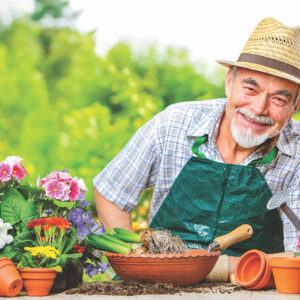
For nearly 40 years, Sagoyesatha has been planting white corn on his family’s plot of land on Sour Springs Road. He returned to Six Nations in 1976, making the move from Buffalo to be closer to family and the community where he spent most his childhood.
Upon his return, he was given Tuscarora Longcob Chief seed from a relative. He planted it, watched it turn into a seedling, and then into a tall, towering stalk. The tassels drank in the sunshine that has risen over the family homestead since time immemorial.
Sagoyesatha saved the seed that year, as he does every year, something that he tells me is an act of resistance. A form of protest against some of the more aggressive forms of industrial agriculture that our society has come to know.
Sagoyesatha is my father. He, along with my mother, raised 4 babies on the land that my ancestors relocated to 175 years ago. White corn has always been part of the landscape of my home for as long as I can remember. By day, the rows of corn made a great hiding place that my siblings and I would race through during games of hide and seek.
By night, my cousin and I would run past the corn field as fast as our little legs would go, certain otherworldly creatures dwelled in the shadows of the stalks. Other times the corn field was our classroom – my father would walk us through and educate us about the value of the corn and its importance to our people.
Today my classroom is the harvest table in my parent’s dining room. In front of me is a tray of white corn that my father is drying out for flour. We snack on it as he reminds me of some of the lessons that I learned as a child. “Oneha is central to our culture, our staple food. It is what sustains us – food and medicine all in one. Some refer to it, along with beans and squash, as ‘The Sustenance’ or Dyohegwih. The Three Sisters.”
Sagoyesatha recounts the story of how he came to grow Mother Corn – Etnoha Oneha – a medicine corn that was traditionally used in ceremony for children who had lost their parents at a young age. “They say 1 cob in every 100 will be Mother Corn”, he shares. After several seasons of growing corn, he peeled back the husks to find one – a single beautiful kernel at the end of the cob, surrounded by 7 rows of kernels.
“To me, it symbolizes one person in the middle, consoled by a circle of others offering support, holding them up.” He adds “I also see Mother Corn as a symbolic message from Mother Earth – if we reconcile our lost relationship with the natural world, our grief and pain as a whole can be changed”. Growing corn to him is a healing process. A cultural reclamation. A reconnection journey.
We sit in front of mason jars full of Mother Corn seeds he has saved as he pauses – silently reflecting on what growing them means to him. He continues, “They almost lost this seed in the 50s and 60s. There was a shortage, and they only had enough for ceremonies. People had to go to other communities to find it. But luckily people kept growing what little was left, and we still have them today.”
A residential school survivor, the significance of his role now as a cultivator of the very food that has sustained our culture since the beginning becomes apparent to me. This is more than hobby gardening. It is a story of tenacity and survival – not just for the seed that was near lost, but for him too.
In the summer, he will walk through the corn fields with my daughter. The vibrant green of the corn will be imprinted on her memory, like it was on mine. My heart will grow at the sight of it because over time, like me, she will make the connection. She will know. She will understand.










